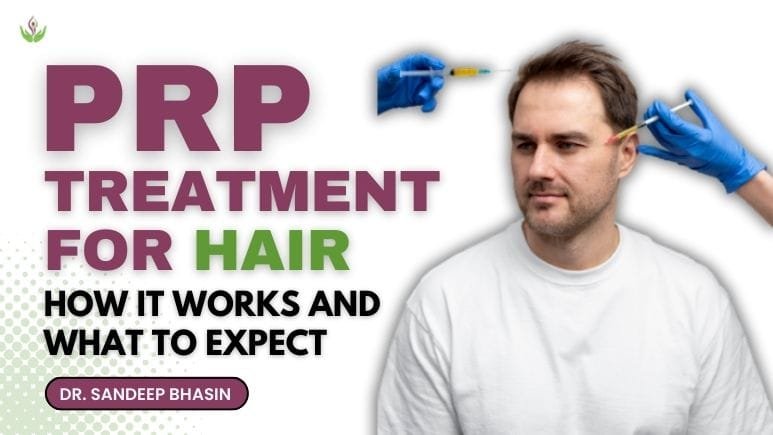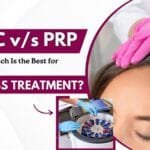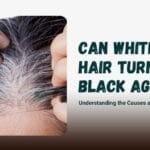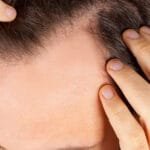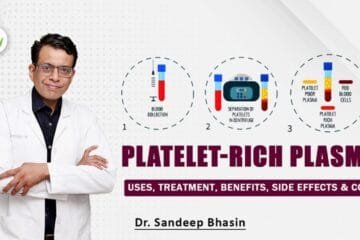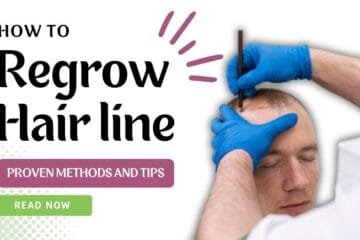Introduction
Hair loss and baldness can have a significant impact on an individual’s self-esteem and confidence. While there are numerous treatments available for hair loss, platelet-rich plasma (PRP) therapy has gained popularity in recent years. PRP therapy involves injecting a concentrated dose of a patient’s own blood plasma into their scalp to stimulate hair growth. This treatment has shown promising results, making it an attractive option for individuals seeking to restore their hairline. In this article, we will discuss the science behind PRP therapy, its effectiveness, and its potential side effects. Additionally, we will examine how PRP therapy compares to other hair loss treatments and offer tips for those considering this treatment option.
Understanding Hair Loss
Hair loss is a common condition that affects millions of people around the world. It is characterized by the gradual or sudden loss of hair from the scalp, which can be due to a variety of causes. In this section, we will define hair loss, discuss its common causes, and mention different types of alopecia.
Defining Hair Loss
Hair loss, also known as alopecia, refers to the loss of hair from any part of the body. However, the most common type of hair loss is from the scalp. Hair loss can be temporary or permanent, and it can affect both men and women of all ages. Hair loss can have a significant impact on a person’s self-esteem and quality of life.
Common Causes of Hair Loss
The most common causes of hair loss are genetics, hormonal changes, and aging. Other factors that can contribute to hair loss include:
- Stress: Physical or emotional stress can cause hair loss. Reducing stress levels can stop this type of hair loss, which is typically temporary.
- Medications: Certain medications can cause hair loss as a side effect. Chemotherapy drugs, antidepressants, and blood thinners are some examples.
- Nutritional deficiencies: A lack of essential nutrients, such as iron, zinc, and vitamin D, can lead to hair loss.
- Medical conditions: Certain medical conditions, such as thyroid disorders, autoimmune diseases, and scalp infections, can cause hair loss.
Male and Female Pattern Baldness
Male and female pattern baldness are the most common types of hair loss. They result from a combination of genetics and hormonal changes. Male pattern baldness, also known as androgenetic alopecia, usually begins with a receding hairline and thinning at the crown. Female pattern baldness, on the other hand, is characterized by thinning hair on the top of the head.
Other Types of Alopecia
There are other types of alopecia that can cause hair loss. These include:
- Alopecia areata: This is an autoimmune disorder that causes hair loss in patches.
- Telogen effluvium: This is a type of hair loss that occurs after a traumatic event, such as childbirth, surgery, or a serious illness.
- Traction alopecia: This type of hair loss results from pulling on the hair, frequently from tight hairstyles like braids, ponytails, and extensions.
In conclusion, hair loss is a common condition that can have a significant impact on a person’s life. Understanding the common causes of hair loss and the different types of alopecia can help individuals identify the underlying cause of their hair loss and seek appropriate treatment.
What is PRP?
Platelet-rich plasma (PRP) is a type of regenerative medicine that has gained popularity in recent years. It is a non-surgical treatment option that uses a patient’s own blood to promote healing and tissue regeneration. PRP therapy has been used to treat a variety of conditions, including sports injuries, arthritis, and hair loss.
PRP works by utilizing the growth factors and cytokines present in the patient’s blood. These growth factors are proteins that promote cell growth and repair, and cytokines are signaling molecules that regulate the immune response and inflammation. By concentrating these factors in PRP, the therapy can be used to promote healing and regeneration in specific areas of the body.
To obtain PRP, a small amount of the patient’s blood is drawn and processed in a centrifuge machine. The centrifuge separates the blood into its different components, including red blood cells, white blood cells, plasma, and platelets. The platelets are then concentrated and combined with the remaining plasma to create PRP.
PRP therapy has been used in a variety of medical applications beyond sports medicine, including dermatology, orthopedics, and plastic surgery. In dermatology, PRP has been used to treat acne scars, fine lines, and wrinkles. In orthopedics, PRP has been used to treat tendonitis, ligament injuries, and osteoarthritis. In plastic surgery, PRP has been used to enhance wound healing and promote tissue regeneration.
Overall, PRP is a promising treatment option for a variety of medical conditions. Its non-surgical approach and use of a patient’s own blood make it an attractive option for those looking for natural and minimally invasive treatments. While more research is needed to fully understand the efficacy of PRP, its potential for promoting healing and regeneration makes it an exciting area of regenerative medicine.
Your Path to Healthy Hair Starts Here – Click for GFC.
PRP Treatment for Hair Loss
Platelet-Rich Plasma (PRP) therapy has gained popularity as an effective treatment for hair loss. PRP is a concentration of platelets and growth factors derived from a person’s blood. When injected into the scalp, PRP stimulates hair growth and helps to prevent hair loss. In this section, we will discuss the use of PRP as a hair loss therapy, the PRP injection procedure for hair loss treatment, the potential benefits of PRP treatment, as well as the limitations and potential side effects of PRP treatment.
How PRP is used as a hair loss therapy?
PRP therapy for hair loss involves drawing a patient’s blood, processing it in a centrifuge to separate the platelet-rich plasma from the other blood components, and then injecting the concentrated PRP into the patient’s scalp. The growth factors in PRP stimulate hair growth by increasing blood flow to the hair follicles, promoting the growth of new hair cells, and prolonging the growth phase of the hair cycle.
PRP therapy is often used in conjunction with other hair loss treatments, such as medication, to enhance their effectiveness. It can also be used as a standalone treatment for hair loss, particularly for individuals with early-stage hair loss or those who are not good candidates for hair transplant surgery.
The PRP injection procedure for hair loss treatment
The PRP injection procedure for hair loss treatment involves the following steps:
- Step 1: Blood is drawn from the patient’s arm and placed in a centrifuge.
- Step 2: The centrifuge separates the blood components, leaving a concentration of platelet-rich plasma.
- Step 3: The PRP is prepared for injection by adding calcium chloride, which activates the growth factors in the plasma.
- Step 4: The scalp is cleaned, and a local anesthetic is applied to minimize discomfort during the injection procedure.
- Step 5: Using a thin needle, the PRP is injected into the scalp in the areas where hair loss has occurred.
- Step 6: After the injection, the scalp is gently massaged to distribute the PRP throughout the treatment area.
The potential benefits of PRP treatment for hair loss
PRP therapy for hair loss has several potential benefits, including:
- Non-surgical: PRP therapy is a non-surgical treatment that does not require any incisions or stitches. This makes it a safer and less invasive option than hair transplant surgery.
- Natural: PRP is derived from the patient’s own blood, making it a natural and safe treatment option.
- Minimal downtime: PRP therapy has a short recovery time, and most patients can resume their normal activities immediately after the procedure.
- Improved hair growth: PRP therapy stimulates hair growth by increasing blood flow to the hair follicles and promoting the growth of new hair cells.
- Prolonged results: The results of PRP therapy can last up to 12 months, making it a long-lasting solution for hair loss.
The limitations and potential side effects of PRP treatment for hair loss
While PRP therapy for hair loss has many benefits, it is not a perfect treatment option. Some limitations and potential side effects of PRP treatment include:
- Results vary: The results of PRP therapy can vary from patient to patient, and some individuals may not experience significant hair growth.
- Multiple sessions may be required: Patients may need to undergo multiple PRP therapy sessions to achieve the desired results.
- Discomfort during the injection: While a local anesthetic is used during the injection procedure, patients may still experience some discomfort or pain.
- Swelling and bruising: Patients may experience mild swelling and bruising at the injection site, but these side effects typically resolve within a few days.
What to Expect During and After PRP Treatment?
PRP (Platelet-Rich Plasma) therapy has gained popularity as an effective treatment option for a range of medical conditions. This minimally invasive treatment involves the injection of a concentrated solution of the patient’s own blood platelets into the affected area to promote healing and regeneration. If you are considering PRP therapy, it is essential to know what to expect before, during, and after the procedure.
In this section, we will discuss what patients can expect during and after the PRP injection procedure, including potential discomfort or pain during the procedure, recovery time, and follow-up appointments.
During the PRP Injection Procedure
Before the PRP injection procedure, your healthcare provider will discuss the process and answer any questions you may have. They will start by drawing a small sample of your blood, which they will place in a centrifuge machine to separate the plasma and platelets from the red and white blood cells.
Once the centrifugation process is complete, your healthcare provider will numb the injection site to reduce any discomfort or pain. They will then inject the concentrated PRP solution directly into the affected area, using imaging technology such as ultrasound or X-ray to ensure the precise placement of the injection.
The entire procedure typically takes around 30 minutes to an hour, depending on the number of areas being treated.
Potential Discomfort or Pain During the Procedure
Most patients experience minimal discomfort or pain during the PRP injection procedure. However, some may experience some discomfort, which can vary depending on the area being treated and the individual’s pain tolerance.
Your healthcare provider will use local anesthesia to numb the injection site, reducing any discomfort or pain during the procedure. After the procedure, you may experience some soreness or bruising at the injection site, which typically resolves within a few days.
After the PRP Injection Procedure
After the PRP injection procedure, you will need to rest and avoid strenuous activity for a few days to allow the treated area to heal. Your healthcare provider will provide you with specific instructions on how to care for the injection site and manage any discomfort or pain.
Recovery Time
The recovery time following PRP therapy varies depending on the area being treated and the individual’s response to the treatment. In most cases, patients can resume their normal activities within a few days of the procedure.
Follow-Up Appointments
Your healthcare provider will schedule follow-up appointments to monitor your progress and ensure that the treatment is working effectively. Depending on your condition and response to the treatment, you may need multiple PRP injections over several weeks or months.
What does PRP treatment for hair cost?
Platelet-rich plasma (PRP) treatment for hair is a non-surgical procedure used to promote hair growth and thickness. PRP treatment involves extracting blood from the patient, processing it to concentrate the platelets, and injecting the platelet-rich plasma into the scalp. The platelets release growth factors that promote the growth of hair follicles.
If you’re considering PRP treatment for hair, one of the important things to consider is the cost. Here are the factors that can influence the cost of PRP treatment for hair:
- Geographic location: The cost of PRP treatment can vary depending on the location of the clinic. In general, clinics in metropolitan areas tend to be more expensive than those in rural areas.
- Clinic reputation: PRP treatment for hair is a specialized procedure that requires skill and expertise. The more experienced and reputable the clinic, the higher the cost of the treatment.
- The number of sessions: The cost of PRP treatment for hair can also depend on the number of sessions required. Typically, patients need several sessions to achieve optimal results, and the cost per session can add up.
- Degree of hair loss: The degree of hair loss can also impact the cost of PRP treatment. Patients with significant hair loss may require more sessions, which can increase the cost.
- Additional treatments: Some clinics may offer additional treatments in conjunction with PRP treatment for hair, such as micro-needling or laser therapy. These additional treatments can increase the overall cost of the treatment.
The cost of PRP treatment for hair in India varies depending on various factors such as location, clinic reputation, and the experience of the doctor. On average, the cost of PRP treatment for hair in India ranges between 7,000 and 9,000 INR per session. However, the cost of PRP treatment for hair in India may vary based on the number of sessions required for optimal results. Most patients require three to four sessions for the best results. The total cost of PRP treatment for hair in India can range from 21,000 INR to 40,000 INR or more.
It is essential to note that the cost of PRP treatment for hair in India may vary depending on the quality and standard of equipment used during the treatment. The cost may also vary based on the experience and reputation of the doctor performing the treatment.
| City | Average Cost (per session) |
|---|---|
| Mumbai | 8,000 – 10,000 INR |
| Delhi | 7,500 – 9,000 INR |
| Bangalore | 6,500 – 8,000 INR |
| Chennai | 7,000 – 8,500 INR |
| Hyderabad | 7,000 – 8,500 INR |
| Kolkata | 6,500 – 8,000 INR |
| Pune | 6,500 – 8,000 INR |
| Ahmedabad | 6,500 – 8,000 INR |
| Jaipur | 6,000 – 7,500 INR |
| Surat | 6,000 – 7,500 INR |
Please note that the costs mentioned in the table are only approximate and may vary depending on several factors, such as the reputation of the clinic, the experience of the doctor, and the location of the clinic. Additionally, the number of sessions required may also vary based on the severity of the hair loss and the individual’s response to treatment. It is best to consult with a qualified healthcare professional to determine the appropriate course of treatment and associated costs.
Conclusion:
In conclusion, PRP treatment for hair loss has potential benefits and limitations. It is important to consult with a qualified healthcare professional before considering any hair loss treatment. Researching options and making informed decisions are crucial for effective hair loss therapy.
FAQ
PRP treatment for hair involves extracting a small amount of your blood, processing it to concentrate platelets, and then injecting the platelet-rich plasma into the scalp. Platelets contain growth factors that help promote hair growth and improve hair thickness.
References:
- Puig CJ, Reese R, Peters M. Double-blind, placebo-controlled pilot study on the use of platelet-rich plasma in women with female androgenetic alopecia. Dermatol Surg. 2016;42(11):1243-1247. https://doi.org/10.1097/DSS.0000000000000871
- Gkini MA, Kouskoukis AE, Tripsianis G, Rigopoulos D, Kouskoukis K. Study of platelet-rich plasma injections in the treatment of androgenetic alopecia through an one-year period. J Cutan Aesthet Surg. 2014;7(4):213-219. https://doi.org/10.4103/0974-2077.150743
- Fertig RM, Gamret AC, Darwin E, et al. Platelet-rich plasma for hair loss: review of methods and results. Skin Appendage Disord. 2018;4(1):1-11. https://doi.org/10.1159/000477353
- Trink A, Sorbellini E, Bezzola P, et al. A randomized, double-blind, placebo- and active-controlled, half-head study to evaluate the effects of platelet-rich plasma on alopecia areata. Br J Dermatol. 2013;169(3):690-694. https://doi.org/10.1111/bjd.12418

